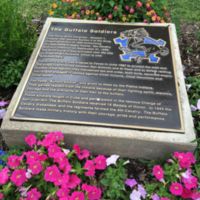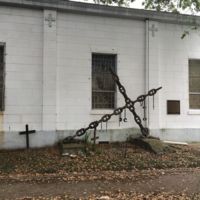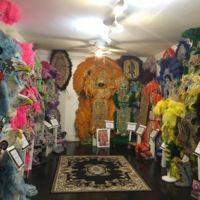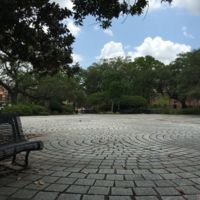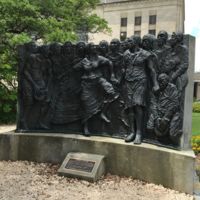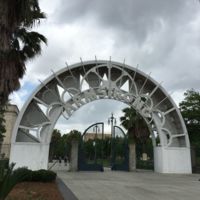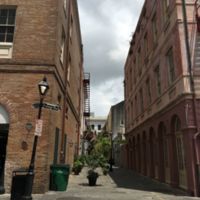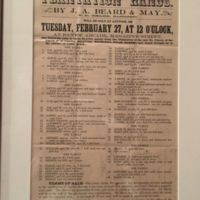Memorialization of Urban Slavery in Southern Coastal Cities By Maura Whang
Title
Memorialization of Urban Slavery in Southern Coastal Cities By Maura Whang
Creator
Maura Whang
Items in the Memorialization of Urban Slavery in Southern Coastal Cities By Maura Whang Collection
Placard to the Buffalo Soldiers-Audubon Park
Audubon Park uptown was the activation site for the 9th Cavalry, or the Buffalo Soldiers, in 1866. The Buffalo Soldiers were also known as the "Negro Cavalry," and fought on the Western Front, earning the respect of the Plains Indians they…
Placard at the Tomb of the Unknown Slave
This placard is attached to the side of St. Augustine Church.
Tomb of the Unknown Slave at St. Augustine Church
The Tomb of the Unknown Slave is dedicated to the "nameless, faceless, turfless Africans who met an untimely death in Faubourg Treme." The shrine "honors all slaves buried throughout the United States and those slaves in particular who lie beneath…
Backstreet Cultural Museum-exterior
The Backstreet Cultural Museum is a pillar of the Treme. Sylvester Francis can be seen far left.
Mardi Gras Indians room at the Backstreet Cultural Museum
The Backstreet Cultural Museum, located in the Treme, is dedicated to preserving New Orleans' African American community-based masking and processional traditions. These include Mardi Gras Indians, jazz funerals, and social aid and pleasure clubs.…
Congo Square
In addition to the memorial, there is also a placard here recognizing the location as Congo Square, but there is not much else. The park remains a dangerous place after dark.
Memorial to Congo Square
This memorial, depicting blacks dancing, stands in Congo Square as a remembrance of the congregations who met here. As the placard says, "This rich legacy of African celebration is the foundation of New Orleans' unique musical traditions, including…
Louis Armstrong Park
This is the main entrance to Louis Armstrong Park in the Treme just across Rampart Street from the French Quarter. Today the park honors jazz legend Louis Armstrong, but it is here where Congo Square still stands, where slaves and free blacks would…
Exchange Place
Exchange Place, or Exchange Alley, was the corridor that connected the American to the French sectors of town. It was created as a result of the 1829 law against keeping slave depots and jails in the French Quarter. Slaves would be led through the…
"60 Very Choice Sugar Plantation Hands" auction notice at the Historic New Orleans Collection
This 1855 notice advertises a large slave auction that was to take place at Bank's Place (J. A. Beard and May auctioneers) on Magazine Street, on February 27, during the high season in New Orleans.

